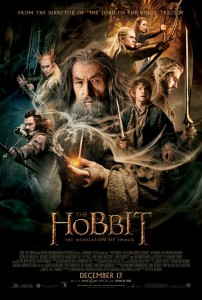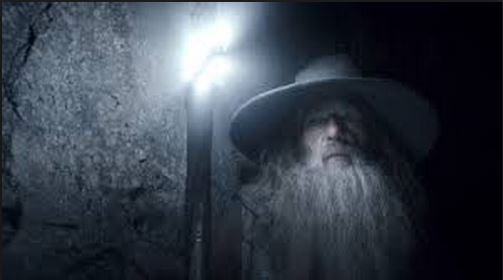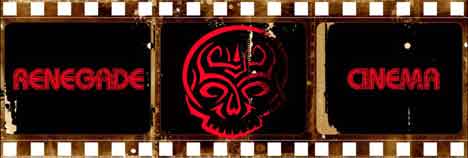 Directed by Peter Jackson
Directed by Peter Jackson
Written by Fran Walsh, Philippa Boyesn, Peter Jackson, Guillermo Del Toro
Cast: Ian McKellen, Martin Freeman, Richard Armitage, Orlando Bloom, Evangeline Lilly, Lee Pace, Benedict Cumberbatch, Cate Blanchett, Luke Evans, Stephen Fry
It seems it is that time again when we take the obligatory annual trip to Peter Jackson’s version of Middle-earth. A fantastic realm where little people with hairy feet are called Hobbits, Dwarves get held up by Dragons, and Elves left fly little Deus exes from their bows in a seemingly inexhaustible amount– and always at the last millisecond. This is a world where endings are perpetually left hanging, and Goblins are dismembered or otherwise dispatched in a host of delightful and amusing ways.

Jackson clings to CGI harder than Golem to his precious, or Smaug to his gold. And like Golem, we’re entranced by the special effects of The Hobbit: The Desolation of Smaug. We’re impressed by how the combination of breathtaking New Zealand scenery and fantastic computer renderings improve exponentially year after year, at an increasingly accelerated rate. Is Desolation the penultimate Tolkien film? The zenith where CGI not only meets the author’s imitable imagination, but surpasses it?
I don’t know. But Smaug is just as terrible and awe-inspiring as his name and Benedict Cumberbatch’s grumblings evoke.

I’m sorry, let me be clear, The Hobbit: The Desolation of Smaug is breathtaking.
Finally getting into the narrative meat of The Hobbit novel, Desolation doesn’t feel as bloated and overlong as its predecessor. The CGI doesn’t seem like it’s being used simply for its own sake—or at least not to the degree which made the first “Hobbit” feel bloated and arbitrary.
Everything is improved. The stakes are not only higher, but hold weight. The plot is rich in detail lacking from the novel, out of necessity. This is not a rueful development, but a welcome one. And Desolation sports quite a pedigree of screenwriters; not only are Lord of the Rings regulars Philippa Boyens, Fran Walsh and Peter Jackson included in the byline, but also original Hobbit contracted director Guillermo del Toro.

But the film isn’t perfect. Cumberbach’s vocal performance as Smaug is needlessly – and annoyingly – computer-enhanced. The beautiful landscapes omnipresent in the first Lord of the Rings trilogy are regularly intruded on by unnecessary CGI enhancements. Heavy handed. Overzealous. Desolation could have benefited from a bit of restraint on behalf of Jackson and his special effects workshop Weta.
Thankfully there’s still a willingness and room to take risks for Jackson. Desolation notably features footage shot on a GoPro Hero camera. Though this footage is fleeting, its presence is a testament to the willingness of Jackson and WingNut to experiment and try new techniques and equipment.

The marquee villain, Smaug, may yet prove to be the next Darth Vader, or Joker. Menacing and sublime, he’s the physical culmination of years of special effects advancement, and a testament to the power of current filmmaking equipment. It certainly makes one realize what a new epoch in cinema this is. The Hobbit: The Desolation of Smaug is demonstrative of what can be achieved with modern cinema, but by the same token serves as an example of CGI being taken a step too far.




